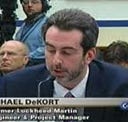Some warning signs Air Taxi and eVTOL makers are all not experienced aircraft makers
Right next to the hype in the autonomous vehicle industry (air and ground) are the Air Taxis and eVTOL makers. There are a couple red flags one should look for to determine there may be significant problems with the designs and testing approaches of these companies.
The first red flag being experience. If you peruse LinkedIn resumes for these folks, like the other, you will see many with very little domain experience. Meaning, they do not have a lot of experience making aircraft. Before I go on, I should mention that I do not either. However, I have deep experience in fixed and rotary wing simulation to an FAA Level D. That means I understand what it takes to make extremely detailed models of these systems including on the flight and engine side. What I have learned from that experience, which applies directly here, is how simulation plays major roles in aircraft development. That in turn leads me to understand another red flag in addition to resume depth. That being, if simulation is used for development and testing, as well as what simulation is used. If these folks use none, there is impending doom on the horizon. (Likely experienced during live flight tests, that should be done in simulation, going very, very wrong.) Hopefully, that doom is bankruptcy from excessive failures and costs before the doom that brings human injury and death.
The next issue is what simulation do they use. Use of X-Plane, and other gaming architecture based systems, for critical design and testing is a huge red flag. While it can have value, when coupled with serious development software like J2 Flight Dynamics provides, it should not be used as the primary simulation platform. The reason being two-fold. The first is depth and breadth of flight and engine model fidelity. While the system is extremely well done and valued very highly by professional pilots for recreational flying, it does not have enough depth and breadth of tuning parameters to facilitate precise modeling. You tweak one thing, and you wind up affecting another negatively because the choices that exist are too broad in nature. The other issue is the architecture is not deterministic and the models are not federated. This means the system cannot run in proper real-time, especially when the scenarios are complex and mathematically more intense. I know all of this because I had the extreme misfortune of working for a company was the first to try to use X-Plane to build two different fixed wing FAA Level 6 simulators. They, and others, had used X-Plane for level 5 systems in the past successfully. The problem is that one level jump to Level 6 is vast. Level 5 is a general aircraft model. The systems are used for cockpit familiarization. Level 6 however, is where you must have “the form fit and function” of an exact aircraft. When I showed the FAA Part-60 Level 6 test set to X-Plane, who had never seen it before, they told me there was no way they could meet it. That company, who tried to use X-Plane to make FAA Level 6 simulators, went bankrupt because of this.
The final sign, which is a result of the first two, is not hyping videos and not showing actual transition. This likely means they cannot transition or do so poorly. Like dropping altitude as they do it. (Beyond that there is transitioning when conditions are not optimal.)
Folks involved in the Air Taxi and eVTOL industry, especially investors and the FAA, should pay attention here. The odds of manufacturing an aircraft correctly without use of proper simulation is very unlikely, especially with complex features like tilt-rotor and multiple engines. Unlikely not only from a cost and time perspective, but most importantly, from a safety perspective. Those safety issues will likely occur in scenarios that are less then benign. Meaning, scenarios these companies are not showing videos of and are hyping. Unlike the automobile industry where we accept 38,000 traffic fatalities a year, one aircraft fatality can shut down this industry, especially if “autonomy” is involved or the air-frame design is or appears novel.
More here
FAA making a grave error in granting autonomous drone waivers to develop in the public domain
Why Silicon Valley Agile engineering approaches won’t work for urban air mobility
SAE Autonomous Vehicle Engineering Magazine — Simulation’s Next Generation (featuring Dactle)
· https://www.sae.org/news/2020/08/new-gen-av-simulation
The Autonomous Vehicle Industry can be Saved by doing the Opposite of what is being done now
Using the Real World is better than Proper Simulation for Autonomous Vehicle Development — NONSENSE
Common Misconceptions about Aerospace/DoD/FAA Simulation for Autonomous Vehicles
My name is Michael DeKort — I am a former system engineer, engineering and program manager for Lockheed Martin. I worked in aircraft simulation, the software engineering manager for all of NORAD, the Aegis Weapon System, and on C4ISR for DHS.
Industry Participation — Air and Ground
- Founder SAE On-Road Autonomous Driving Simulation Task Force
- Member SAE ORAD Verification and Validation Task Force
- Member UNECE WP.29 SG2 Virtual Testing
- Stakeholder USDOT VOICES (Virtual Open Innovation Collaborative Environment for Safety)
- Member SAE G-34 / EUROCAE WG-114 Artificial Intelligence in Aviation
- Member CIVATAglobal — Civic Air Transport Association
- Stakeholder for UL4600 — Creating AV Safety Guidelines
- Member of the IEEE Artificial Intelligence & Autonomous Systems Policy Committee
- Presented the IEEE Barus Ethics Award for Post 9/11 DoD/DHS Whistleblowing Efforts
